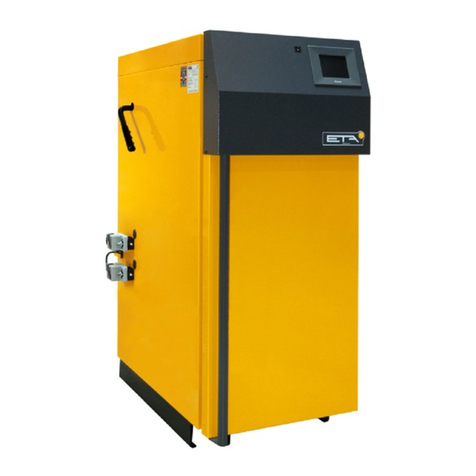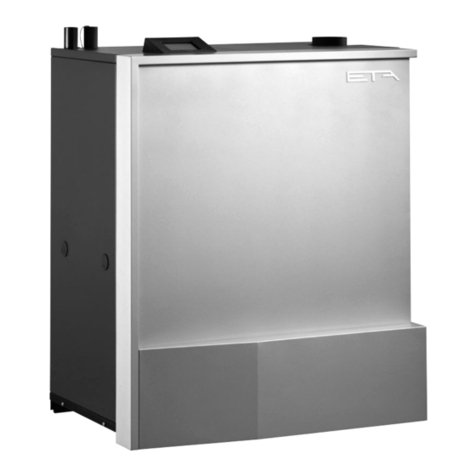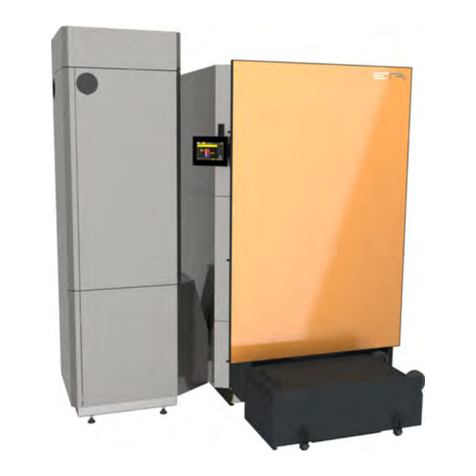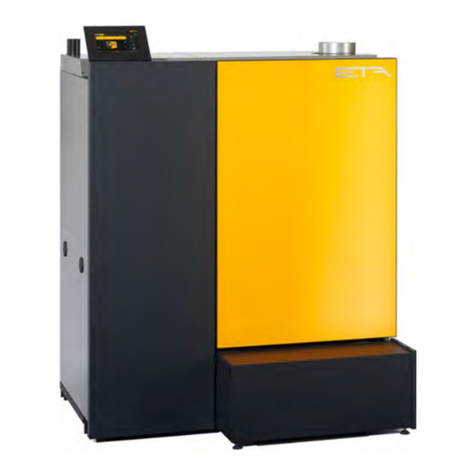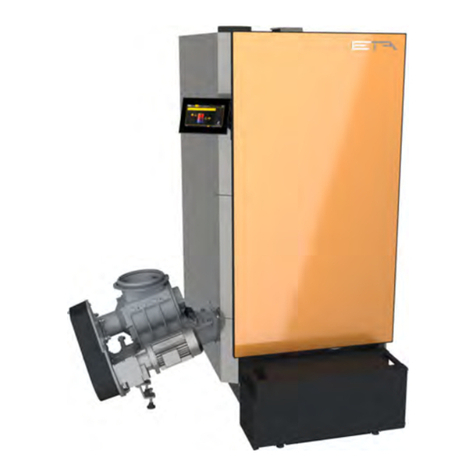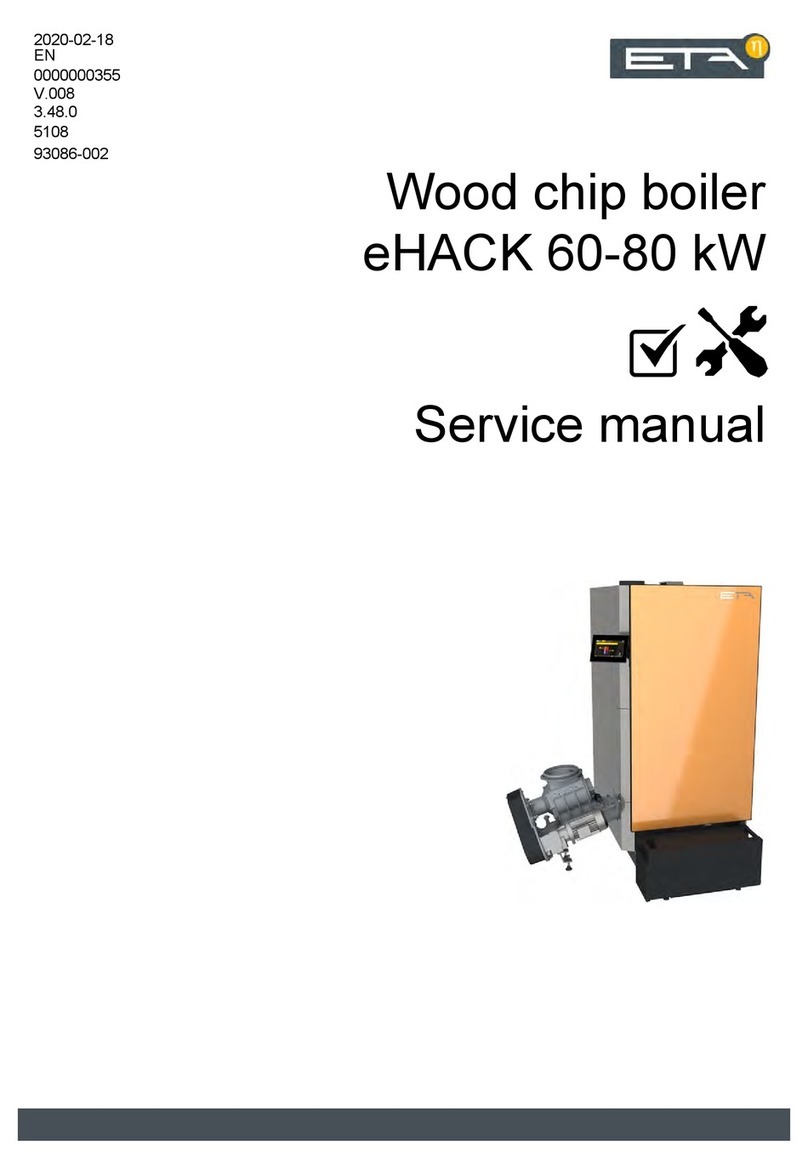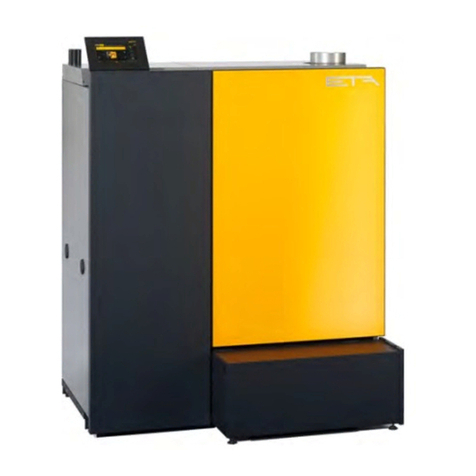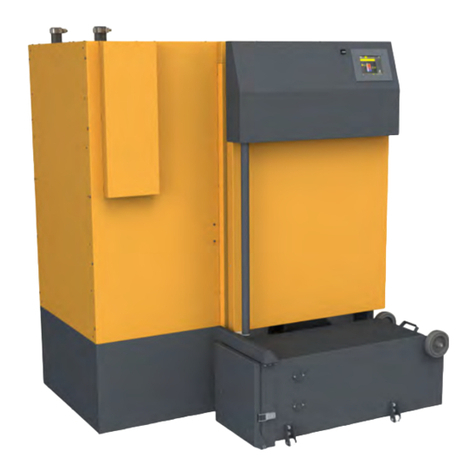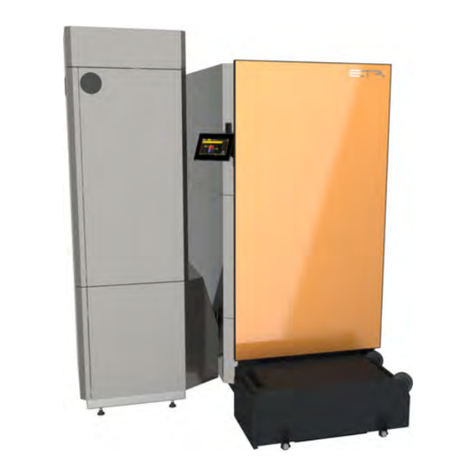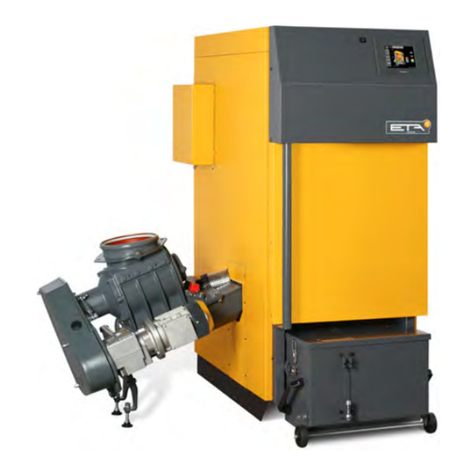
General Warranty, guarantee and liability
Suitable fuels
• Wood chips according EN ISO 17225-4:2014,
quality classes A1/A2/B1/B2, size P16S-P31S,
maximum water content 35% (M35)
• Wood pellets according EN ISO 17225-2:2014,
quality class A1, ENplus-A1
• Shavings and swarf briquets according EN
ISO 17225-3:2014, quality classes A1/A2/B
• In Germany: fuel classes 4/5a according
1. BImSchV. Use fuel classes 5/6/7/8 only after
consultation with company ETA.
Operation with unsuitable fuels, in particular high-
slag pellets from grain waste, for example, or
corrosive fuels such as miscanthus fertilised with
potassium chloride, is prohibited.
Ensure supply air is free from aggressive
substances
The air supplied to the boiler must be free from
aggressive substances such as chlorine and fluorine
from solvents, cleaning agents, adhesives and
propellants, or ammonia from cleaning agents, to
prevent corrosion of the boiler and chimney.
Permissible water hardness
Water is the intended heat-transfer medium. For
special anti-frost requirements, up to 30% glycol may
be added. Softened water is required for the initial fill-
up of the heating system and for refilling after repairs.
Addition of hard water should be minimised to limit
limescale build-up in the boiler.
In order to protect the boiler from calcification, the
water hardness of the heating water must be
taken into account. Observe the indications outlined in
ÖNORM H 5195-1. Details can be found in chapter 7.3
"Water hardness".
pH value between 8 and 9
The pH value of water used to fill the heating system
must be between 8 and 9.
Use a sufficient number of shut-off valves
Set enough shut-off valves to avoid bleeding large
amounts of water during repairs. Any leaks in the
system must be repaired at once.
Provide a sufficiently large expansion tank or a
pressure maintaining device
To prevent air from being drawn in while the system is
cooling, the heating system professional must provide
a sufficiently large expansion tank or a pressure
maintaining device.
Open expansion tanks must not be used.
Sufficient power
Operation at lower power than the lowest power
specified on the type plate is not permitted.
Expanding the control system
Only components provided by us may be used for
expanding the control system, unless these are
generally available standard devices, such as
thermostats.
Regularly perform cleaning and maintenance
Cleaning and maintaining the product is essential. The
required steps and intervals are either contained in this
documentation or included as a separate document.
Repairs
Repairs are only permitted using spare parts provided
by us. The only exceptions are common standardised
parts such as electrical fuses or fastening materials, as
long as they possess the required features and do not
restrict the functionality of the system.
Proper installation
The installing contractor is liable for proper installation
according to the corresponding installation instructions
and the relevant rules and safety regulations. If you as
customer have installed the heating system partly or
entirely without relevant training and in particular
without up-to-date practical experience, without having
the installation checked by a trained and responsible
expert, we exclude defects in our delivery and
consequential damages resulting from this cause from
our warranty, guarantee and liability.
Repair of defects
For repairs of defects carried out by the customer or by
a third party, ETA shall only bear the costs or remain
obligated by warranty if this work was approved in
writing in advance by the customer service of ETA
Heiztechnik GmbH.
No tampering with boiler safety devices
Boiler safety devices such as those mentioned below
must not be tampered with: Temperature monitoring
and control devices, safety temperature limiters, safety
valves and thermal discharge valves.
Potential equalization is needed for the boiler
The boiler must be connected to the potential
equalization of the boiler room or the building. Country-
specific regulations must be observed.
